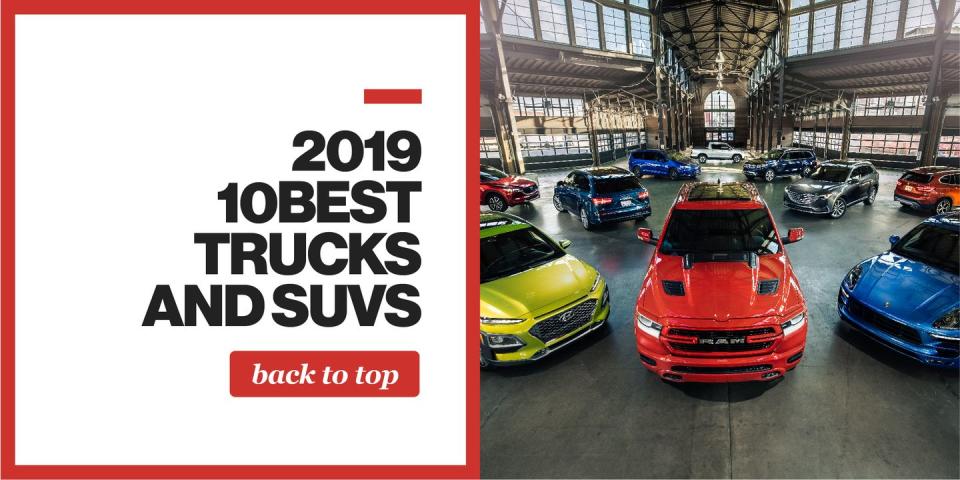2019 10Best Trucks and SUVs
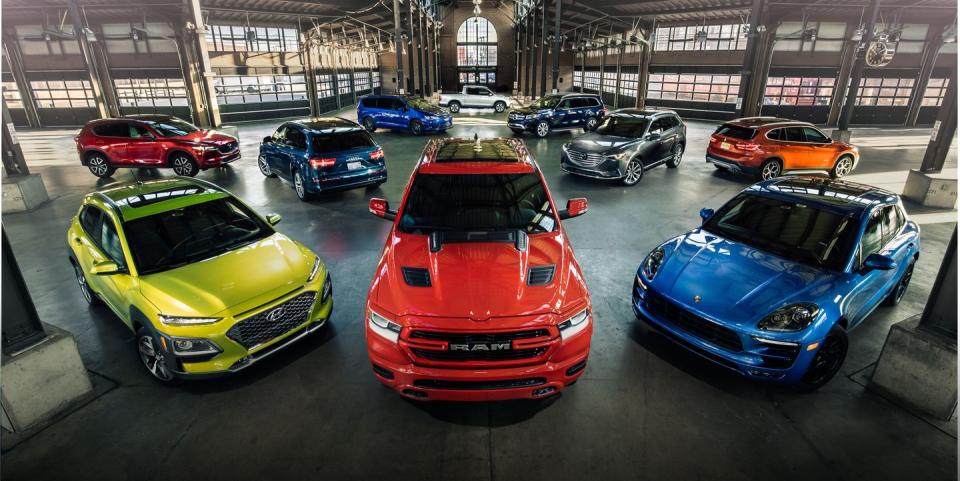
We get it: America likes trucks and SUVs, as demonstrated by our collective ongoing voting with our vehicle-buying dollars. Automakers, while simultaneously trying to predict what’s ahead in an electrified and autonomous future, are nevertheless cashing in on these nearer-term opportunities by both stuffing entries into every last subsegment and by discontinuing many long-running cars.
To help sift through the confusion caused by this flurry of activity, we gathered all of the new or substantially revised entries along with last year’s winners-54 vehicles in total-to answer the question of which is the best in each of our 10 categories of SUVs, pickups, and van. Our entire editorial staff spends a week driving and evaluating all of the vehicles, and this isn’t a quick, round-the-block test drive.
In addition to driving them on our twisting, undulating, and pothole-ridden on-road loop, we also have an off-road section, as well as trying out the rear-seat accommodations, and tinkering with new features and technologies. We also throw our standard battery of performance and static testing at the entries-everything from acceleration, braking, and handling, to measuring blind spots, the size of storage bins and cargo holds, and fuel economy-so that there’s plenty of data to back up our observations.
How does a vehicle emerge victorious? First, it must be under our price cap, which, as with 10Best Cars, we raised to $90,000 this year to account for rising prices. But it remains roughly 2.5 times the average price paid for a new vehicle. Each evaluator scores every vehicle on a 100-point scale based on how well it meets its intended purpose and that of the segment in which it competes, how good a value it is, and how compelling it is to drive. What follows are the best of the best.

Best Subcompact SUV: Hyundai Kona
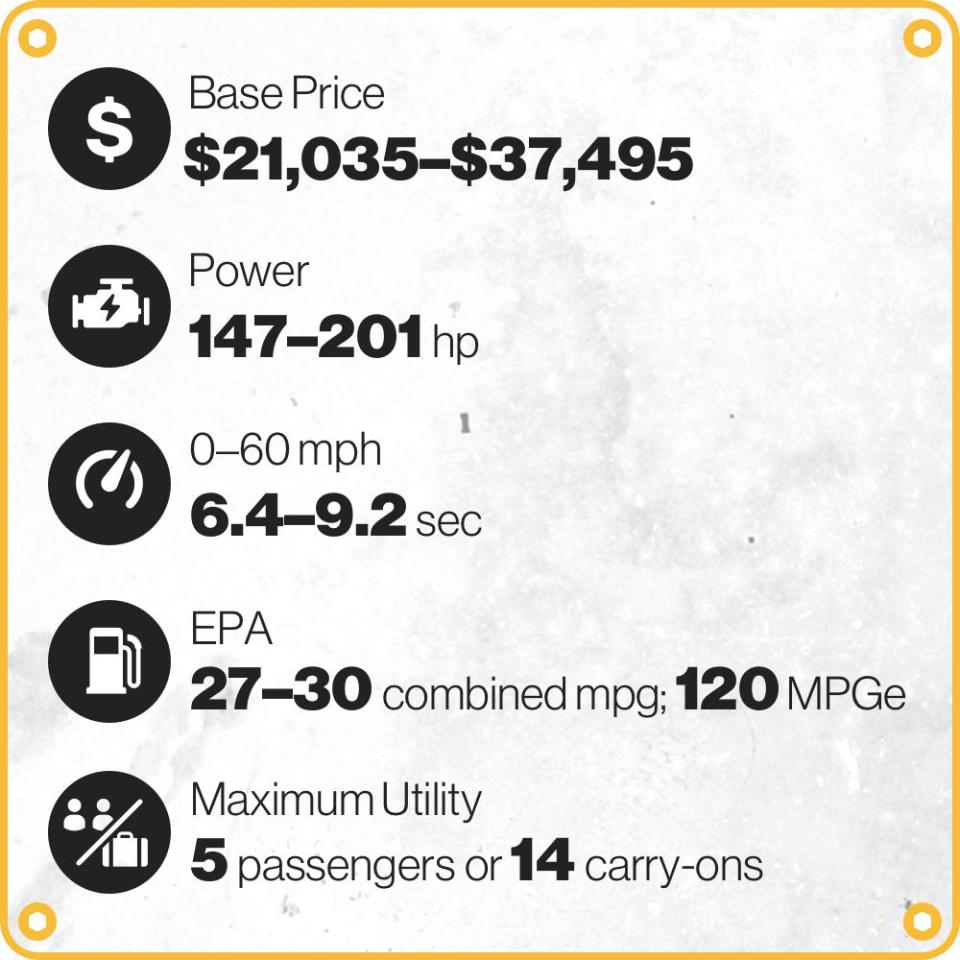
The Hyundai Kona is a welcome exception in an often underwhelming segment where low prices buy automakers blanket coverage for all manner of dynamic sins. A $28,000 vehicle that needs a full 10-Mississippi count to achieve 60 mph (looking at you, Ford EcoSport) really undermines the notion of continuous automotive progress.
Starting at $21,035, the Kona is affordable, not cheap. You feel that distinction in its tame ride, tidy handling, and accurate steering. After more than three decades of squeezing its cars into cut-throat low-margin segments, Hyundai knows how to stretch a penny. The Kona’s standard 147-hp 2.0-liter inline-four is unexceptional. It’s the six-speed automatic transmission bolted to the engine that sets the powertrain apart. Compared with the indifferent CVTs found in so much of the competition, the Kona’s transmission shifts with purpose and precision. The Kona is also the rare subcompact ute to offer an engine upgrade. Paired with a seven-speed dual-clutch gearbox, the 175-hp turbocharged 1.6-liter inline-four slashes the 60-mph hustle from 9.2 seconds to 6.6.
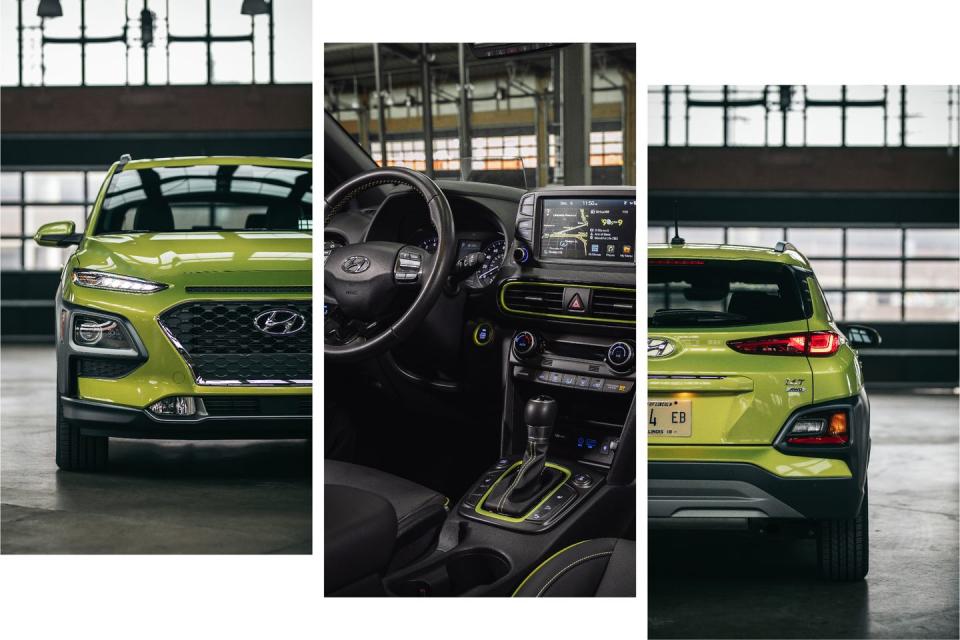
And then there’s this: At $37,495 and with 258 miles of range, the Kona Electric quietly steps ahead of the Chevy Bolt and the mythical $35,000 Tesla Model 3 in the race to insert EVs into the mainstream. Sure, standing face to face with the four-eyed Kona can be awkward. We’re never sure where to look. Inside, though, it’s conventionally attractive and comfortable, with lowest-bidder plastics-universal in this class-balanced by satisfying touch points. And like its stablemates, this Hyundai is a textbook example of functional touchscreen ergonomics, with every control exactly where you’d expect it to be.
In the subcompact segment, the competition sets a low bar. But where mere goodness would suffice, the Kona is excellent. It is proof that not all crossovers are equal.

Best Subcompact Luxury SUV: BMW X1
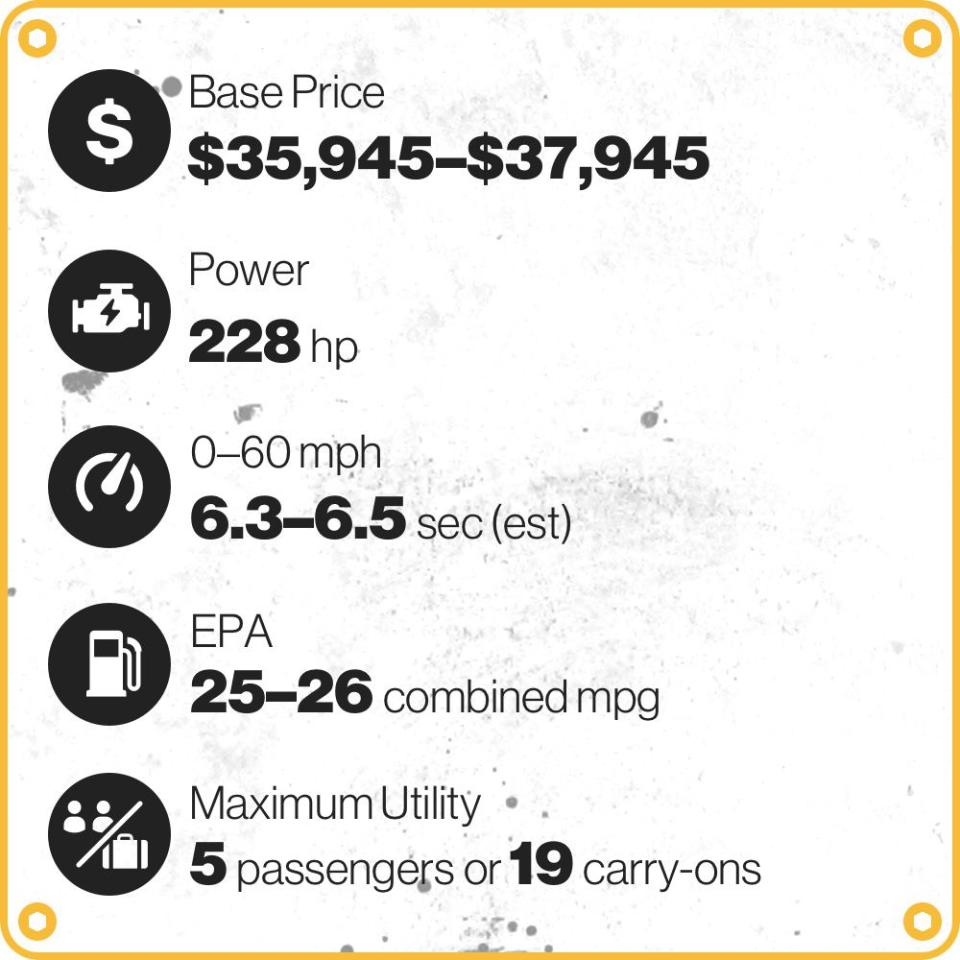
BMW developing a front-drive vehicle might have sounded crazy at first, but for BMW, flexibility proved a winning strategy. In the flourishing subcompact-luxury-crossover segment, the X1 faces its strongest contenders to date. New offerings include the Cadillac XT4, the Jaguar E-Pace, the Lexus UX, the Volvo XC40, and the X1's slightly squashed sibling, the X2. But while these newbies are still finding their way through their first generations, the incumbent X1 has already worked through a rear-drive iteration and now runs on a different platform.
The second-generation, front- or all-wheel-drive X1 is a paragon of form and function. This charming ute's exterior is unmistakably BMW, and that matters to entry-level-luxury buyers. The turbocharged 2.0-liter inline-four isn't the most powerful in the field, but its free-revving attitude and linear power delivery, as well as the tidy operation of the eight-speed automatic, land the X1 near the top of the class in terms of acceleration. Its athletic chassis is always happy to unwind a back road, but the ride is never too busy for daily operations.
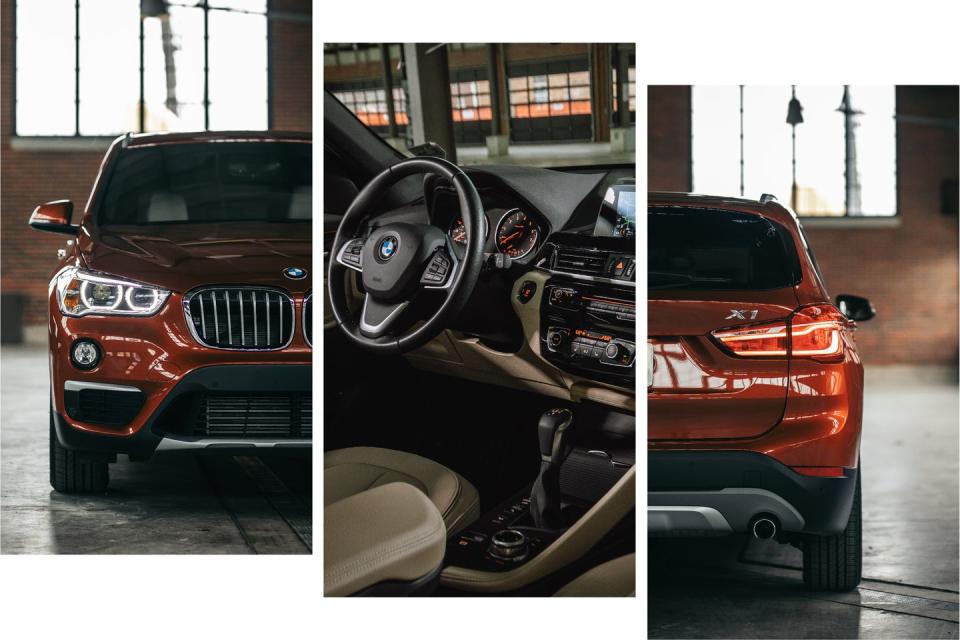
The X1's interior may not have the fireworks of some of its newest adversaries, but what it does have is usable space. Its class-leading 101 cubic feet of passenger volume remains uncontested, as does its ability to swallow 27 cubic feet of cargo with the seats up and 59 with them folded. It's here that the X1 separates itself from the X2, the latter's roofline creating a claustrophobic rear seat and a paucity of cargo space.
In one of the fastest-growing segments in the market, there's an offering that caters to every taste, style, and priority. But none of its competition is quite the complete package the X1 is.

Best Compact SUV: Mazda CX-5
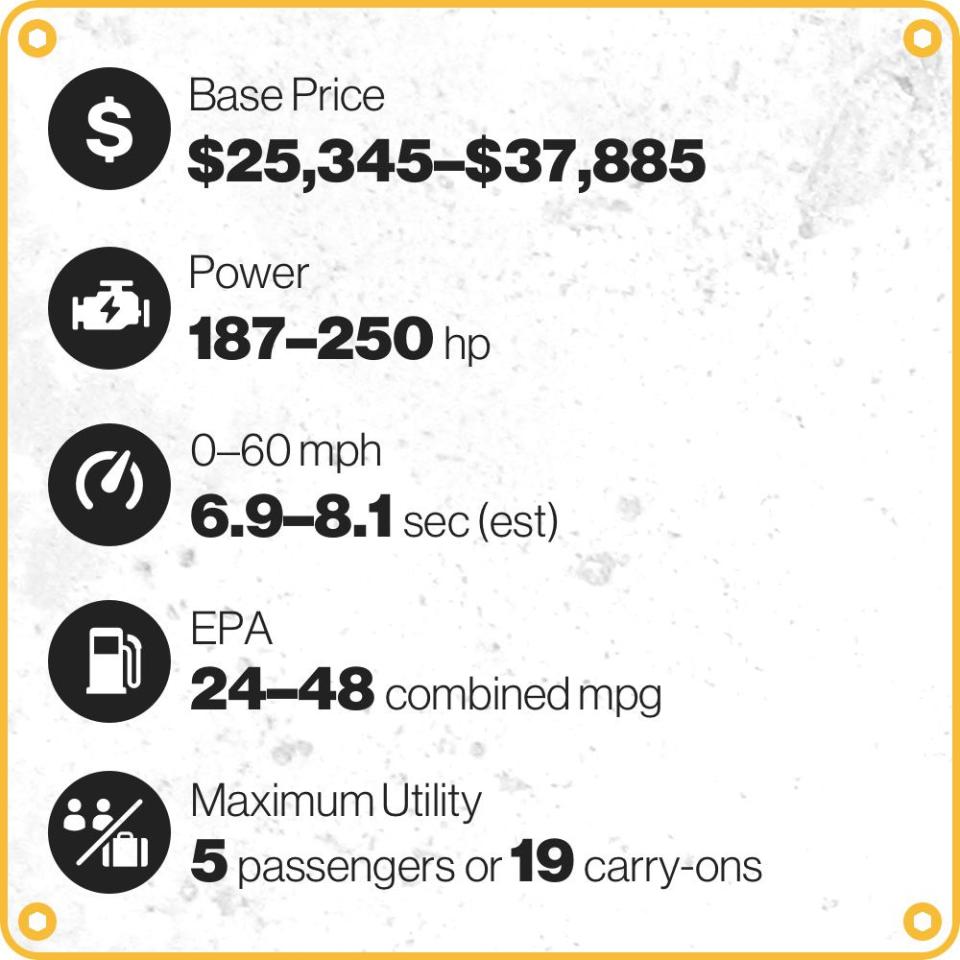
When we tell you that the Mazda CX-5 is the best compact crossover for sale today, it’s not only because we believe it to be true. It’s also in the hope that by rewarding this particular brand of excellence, we’ll encourage more of it.
There are other strong contenders in the CX-5’s class this year. The new Jeep Wrangler, for instance, is a superlative vehicle but so committed to its particular mission that we can’t recommend it for everyday use. The Subaru Forester is new for 2019 and competent in every way, but it's also kind of dull. Toyota’s RAV4 offers a fresh design and meaningfully improved driving dynamics, but ultimately the Toyota is merely satisfying, not engaging.

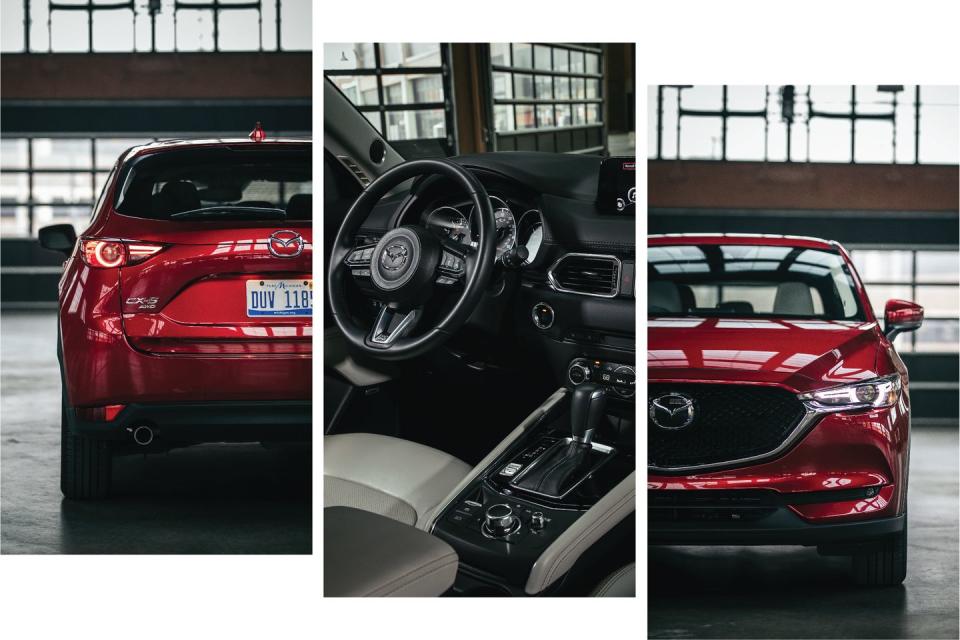
The Mazda is different. It provides luxury-grade interior refinement-particularly in its new Signature top trim level-at solidly nonluxury prices. Its ride and handling feel sized up from a Miata, rather than dumbed down for mass-market appeal. A new available turbocharged 250-hp engine provides uncommon verve for this class. And the CX-5's exterior bucks the boxy conventions of its segment in favor of a design that's significantly more elegant. But most of all, there’s the sense that the Mazda CX-5 was designed for people like us-people who love to drive. That’s a particularly type of excellence we're eager to get behind.

Best Compact Luxury SUV: Porsche Macan
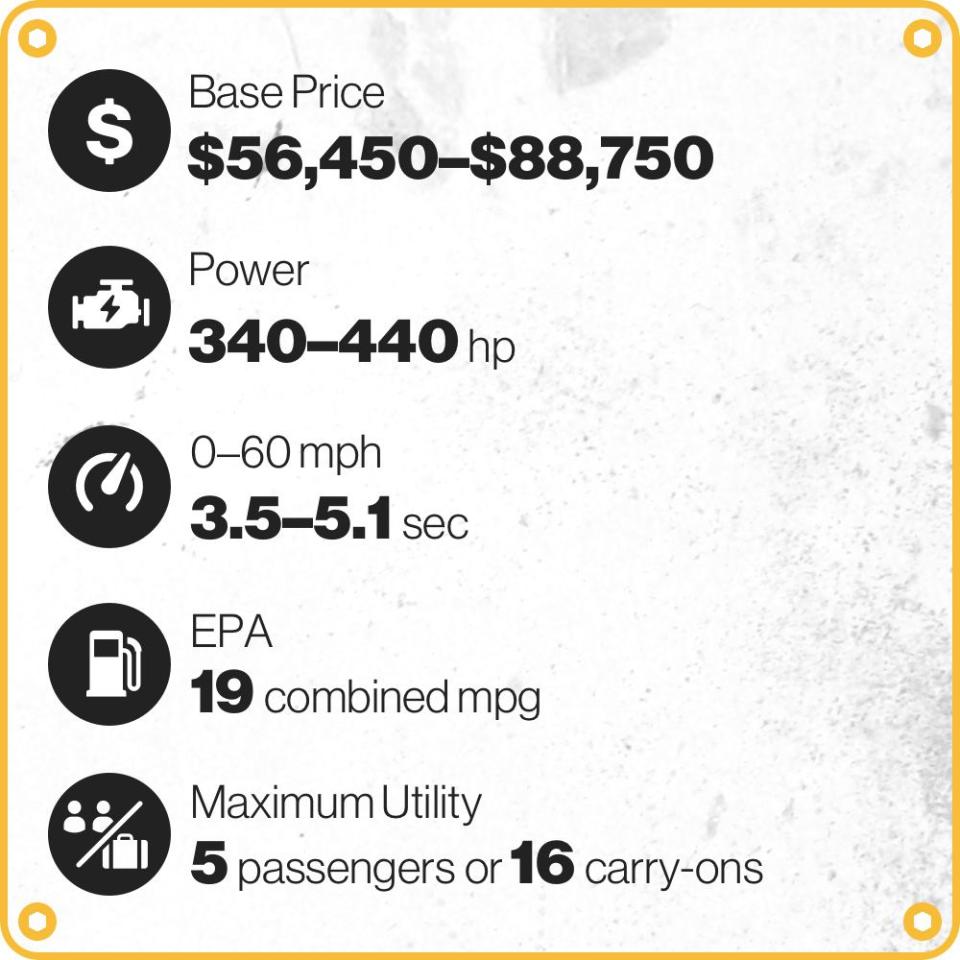
There's a simple reason Porsche's incumbent Macan is once again our choice as the Best Compact Luxury SUV: It presents the best set of compromises, and we think that's a good thing. The foundation of this position is that we will always see SUVs as utility vehicles and not pure driving partners. So the Macan's provocative fusion of capability, control feel, and sensible comfort wins our hearts-even in the presence of Alfa Romeo's gonzo 505-hp Stelvio Quadrifoglio.
Chief among those traits is that Porsche avoids the common mistake many manufacturers make when engineering an SUV that handles: neck-snapping stiffness. Driving most Macan competitors energetically is a violent exercise in head toss, the unsettling lateral jerk produced when a tall, stiff vehicle rotates quickly. But the Macan is supple, and rather than muscling physics into submission, it endears itself to the surface and hoovers down the road with self-assured compliance, its seven-speed dual-clutch transmission obediently shuffling the gears. In the Macan, driving composure is built in rather than built on. And so we again recognize the 340-hp Macan S, the 360-hp Macan GTS, and the 400-hp Macan Turbo, plus the newly eligible 440-hp Macan Turbo with Performance Package (the 252-hp base model isn't included) as the best compact luxury SUVs available.
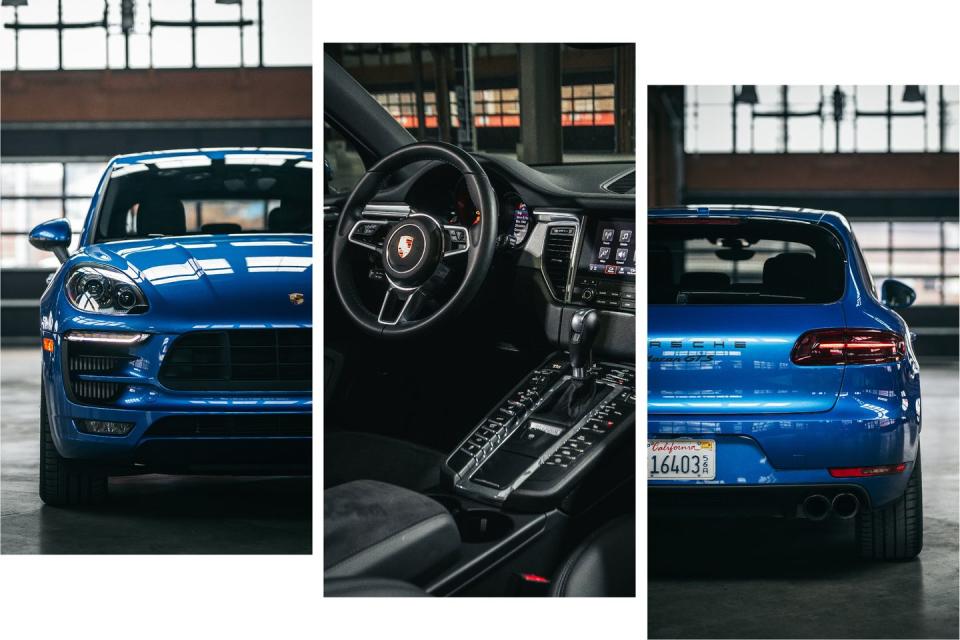
Note that the 2019 versions of the Macan and Macan S arrive in late spring 2019, and, having driven them already, we can report that the update brings some modest improvements that in no way alter the results here. Chief among them is that the S trades its twin-turbo V-6 for a more powerful, 348-hp single-turbo version (the base model soldiers on with the same engine). Updated versions of the higher-performance models should follow soon after.

Best Mid-Size SUV: Mazda CX-9
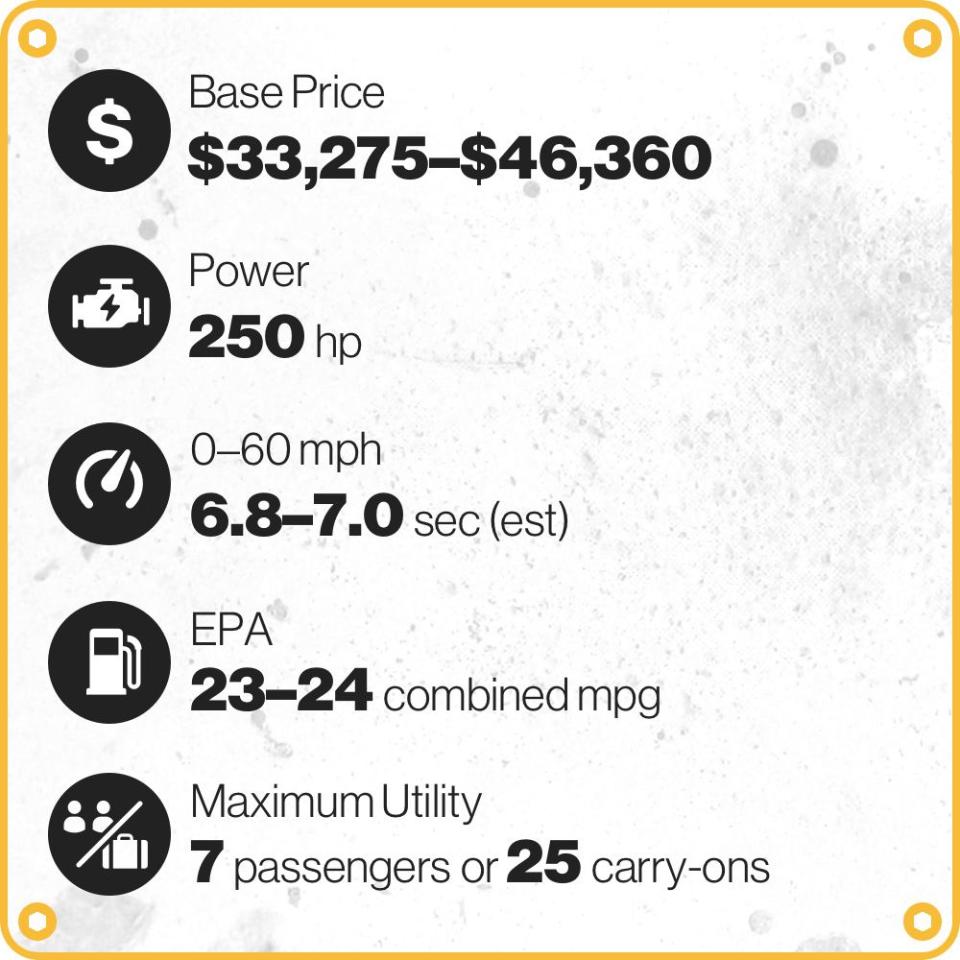
Conventional wisdom would have you believe that, when buying a mid-size SUV, size is all that matters. That performance and comfort and confidence don’t. And that anyone shopping in this segment must give up on driving pleasure. But the Mazda CX-9 proves that none of those notions are true.
You want good looks? Of course, you do. Take a gander at the flowing curves and taut lines of the CX-9. Inspect its tasteful adornment. Inside, you will find one of the most handsome arrangements of materials in the segment. A mass-market family vehicle needn’t look and feel like a plastic storage bin. And you need not pilot a rudderless barge down the shipping lanes of middle age. The CX-9 proves that, too, with its careful chassis tuning and a constant eye toward a rewarding human-machine relationship. Nothing in this class can match the CX-9’s dynamic competence-it’s not even close. And the Mazda’s torque-rich turbocharged 2.5-liter inline-four is a frugal overachiever.
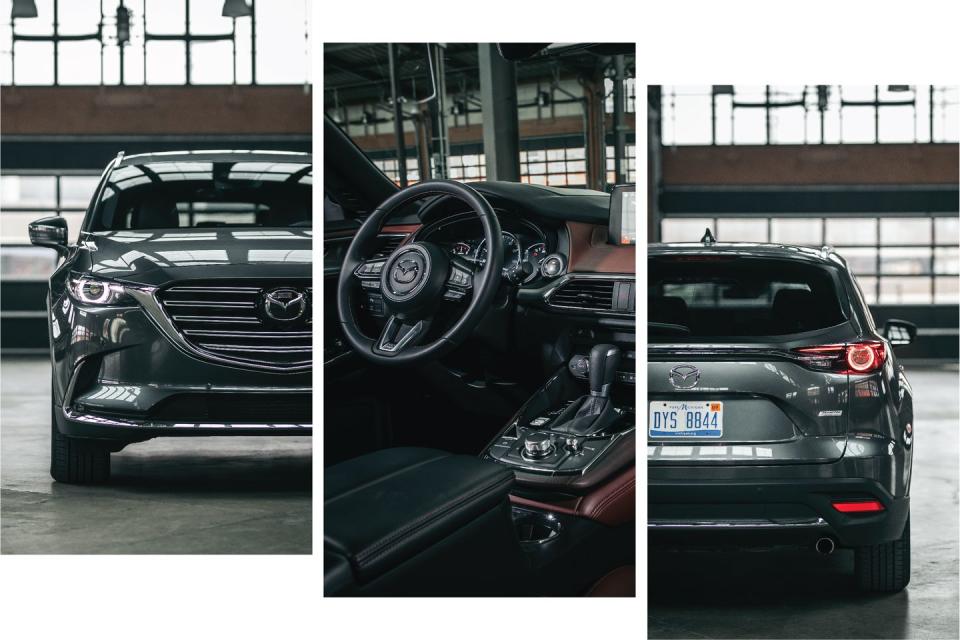
It’s true that the CX-9 is not as voluminous as some of the other contenders in this segment. But with 135 cubic feet of passenger space and up to 71 cubic feet of cargo room, the CX-9 may be considered small only by those who won’t be satisfied until they have far too much. The Mazda CX-9 overthrows the tyranny of low expectations that afflicts popularly priced family haulers. In so doing, it earns our acclaim as the best mid-size SUV.

Best Mid-Size Luxury SUV: Audi Q7
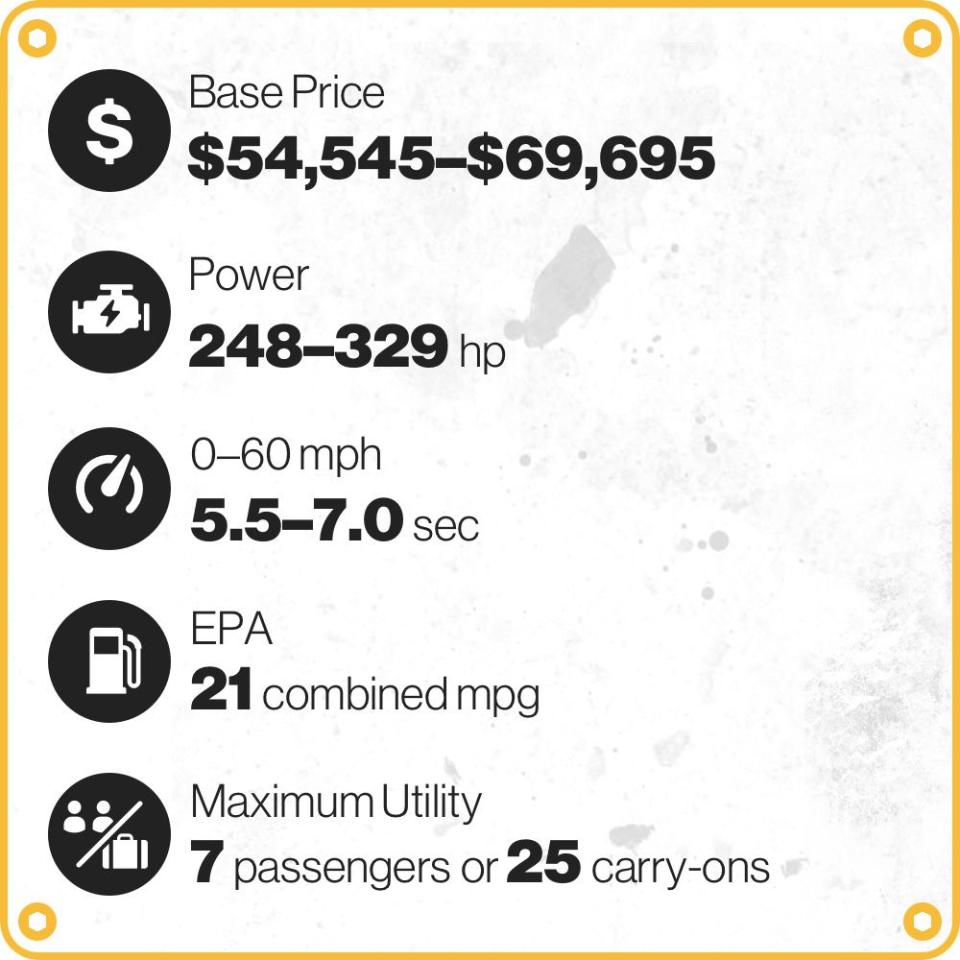
In the Audi Q7 we see a benchmark of excellence. The Audi rides on a well-reasoned longitudinal-engine platform shared with the VW Group's premium SUVs including the Lamborghini Urus, Bentley Bentayga, Porsche Cayenne, and the Q7's running mate, the shiny-haired, sport-scented Q8. You can feel those more expensive utes in the Q7's comportment. On its optional performance tires, the Q7 outgrips and outbrakes its three-row luxury-SUV competition. But even on all-season rubber, a four-wheel-steering-equipped Q7 feels low and lithe and ready for action-a large-format GTI, if you will. Available air springs help it adapt to every road surface and radius. Thus equipped, the Q7 asks no on-road compromise for its surprising off-road competence.
Okay, there are a few faults, most of which you can avoid. Skip the base turbocharged 2.0-liter four-cylinder, because even though the Q7 is an aluminum-intensive beast, it still weighs in at 4800 pounds, and the four struggles to keep acceleration in line with expectations. Choose the supercharged 3.0-liter V-6 and you get a fulsome 333 horsepower and 325 lb-ft of low-peaking torque perfectly suited to the dual demands of in-city puttering and autobahn blazing. We even like its power delivery better than the torquier turbocharged V-6 in the new and putatively sportier Q8.
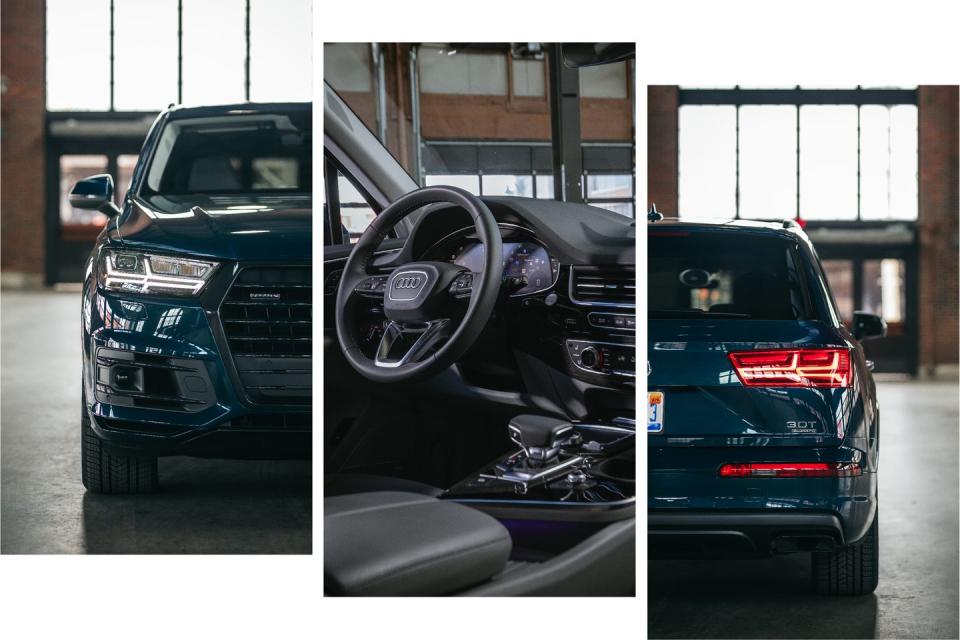
As for the dim, cramped third row, this should only be used to age cheeses. The rest of the interior-perfect seats, commanding driving position-is sublime, and offers the last and best version of Audi's knob-based MMI infotainment system. The new dual-screen, virtual-button unit in the Q8 might wow buyers in the showroom, but you can operate the one in the Q7 without taking your eyes off the road.
In the final analysis, this is the most well-rounded, high-value, and trustworthy SUV in its segment. Maybe in all SUV-dom.

Best Large SUV: Mercedes-Benz GLS450
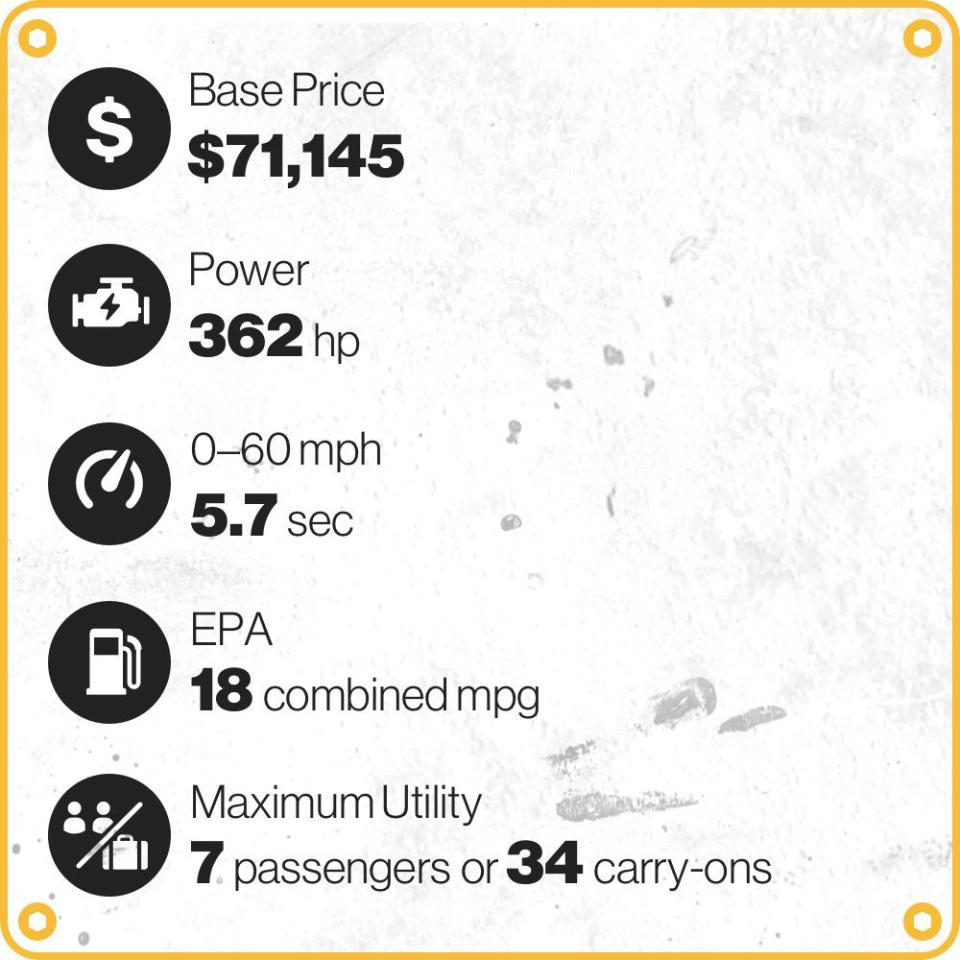
The Mercedes-Benz GLS450 earns its third consecutive 10Best Trucks and SUVs award not just because it’s an outstanding hauler of people and their freight, but because it is a comparative bargain. Even within Mercedes’ dizzying range of products, this $71,145 S-class of SUVs starts $20,000 lower than an actual S-class. You get a lot when you buy a GLS.
That said, the price of our test unit was within a change jar of six figures. But for perspective, the Lincoln Navigator that served as its only competition this year has a base MSRP of $74,500, and a top-of-the-line Black Label Navi can clear $100K as easily as these jumbo SUVs dispatch potholes, speed bumps, and inconveniently placed parking blocks. Regardless of price, the Lincoln fared no better against the GLS than its Ford Expedition sibling or the Chevy Tahoe and Suburban and GMC Yukon did last year.
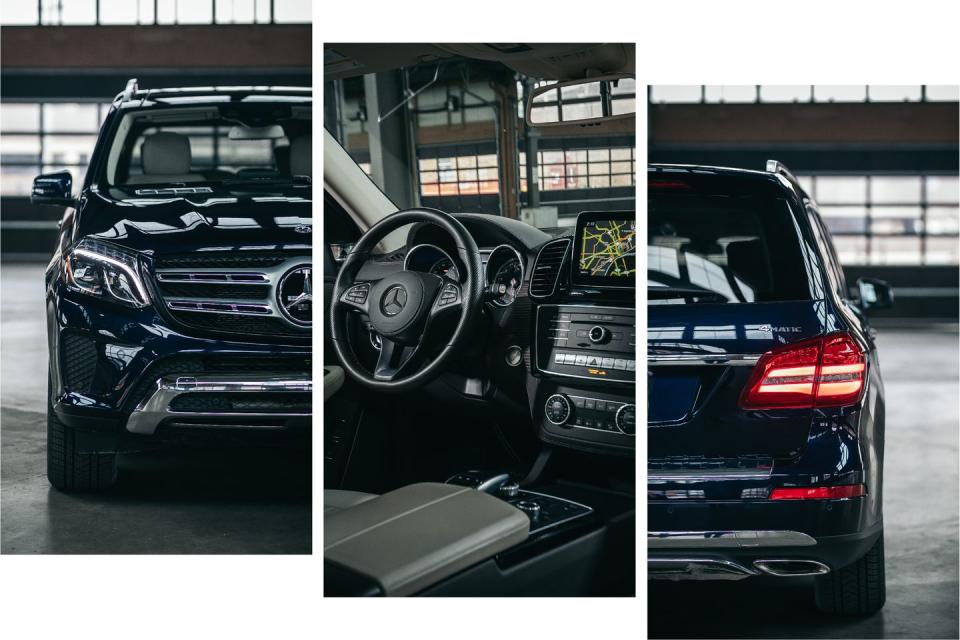
The GLS’s unibody structure feels aptly Teutonic. It steers more like a sedan than a truck, and its air springs deliver a pillowy ride. It is smartly sized and packaged such that all three rows provide enough room to be comfortable, and yet the GLS can still fit handily in the average garage. Its twin-turbocharged 3.0-liter V-6 puts out only 362 horsepower, but Benz’s nine-speed automatic makes the most of it, allowing this 5400-pound SUV to make sub-six-second zero-to-60-mph runs as effortlessly as its button-operated third-row seats fold flat. The GLS simply rides better, drives smaller, and offers a higher level of fit and finish than you can get in any other large SUV, and that’s as true of the base vehicle as it is the six-figure examples.

Best Mid-Size Pickup: Honda Ridgeline
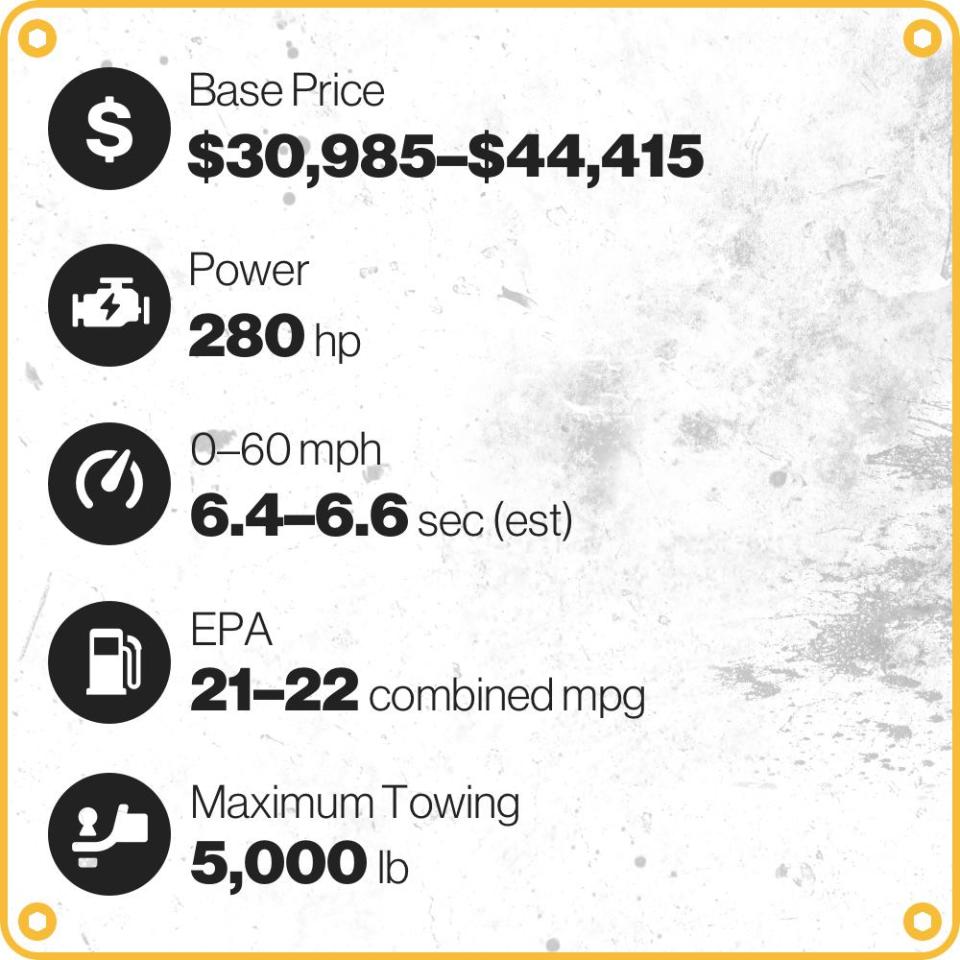
The Honda Ridgeline proves that different can be better. A unibody pickup based on the same platform that underpins Honda’s Odyssey and Pilot, the Ridgeline is an anomaly. It’s the only pickup on the market with a transverse-mounted engine (a 280-hp 3.5-liter V-6), and in its base configuration, it drives the front wheels. Scandalous!
And while the Ridgeline’s towing and payload ratings are lower than some of the competition’s, this mid-sizer more than compensates with its unique features: a lockable in-bed weatherproof trunk, a dual-hinged tailgate, and a composite bed that can double as a big speaker. The Ridgeline's outside-the-mainstream design imbues it with real versatility, and make it something more than merely a shrunken version of a full-size pickup. Furthermore, it boasts a roomy and comfortable cabin, and its superior ride and handling are befitting a sedan. The Honda also boasts excellent fuel economy and robust acceleration.
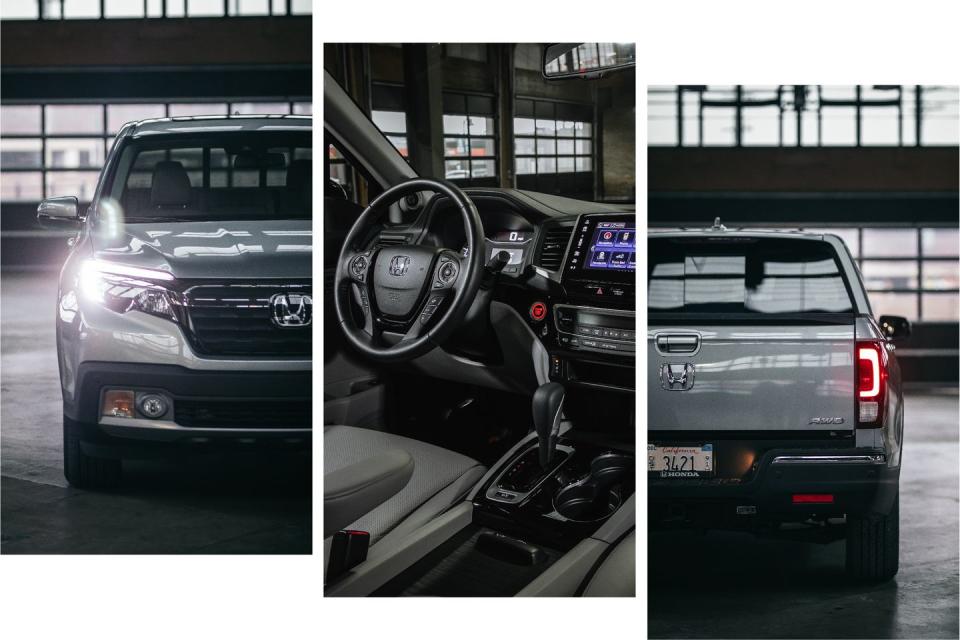
It’s enough to earn the Ridgeline our accolades as the best mid-size truck for a third consecutive year-although we should make it absolutely clear that the Ridgeline ran unopposed at this year’s event, owing to a lack of fresh competition. With the mid-size-pickup segment drawing more entrants-including the Ford Ranger and Jeep Gladiator-that won't be the case for 2020. But we expect the iconoclastic Ridgeline will still be a strong contender even in an expanded field.

Best Full-Size Pickup: Ram 1500
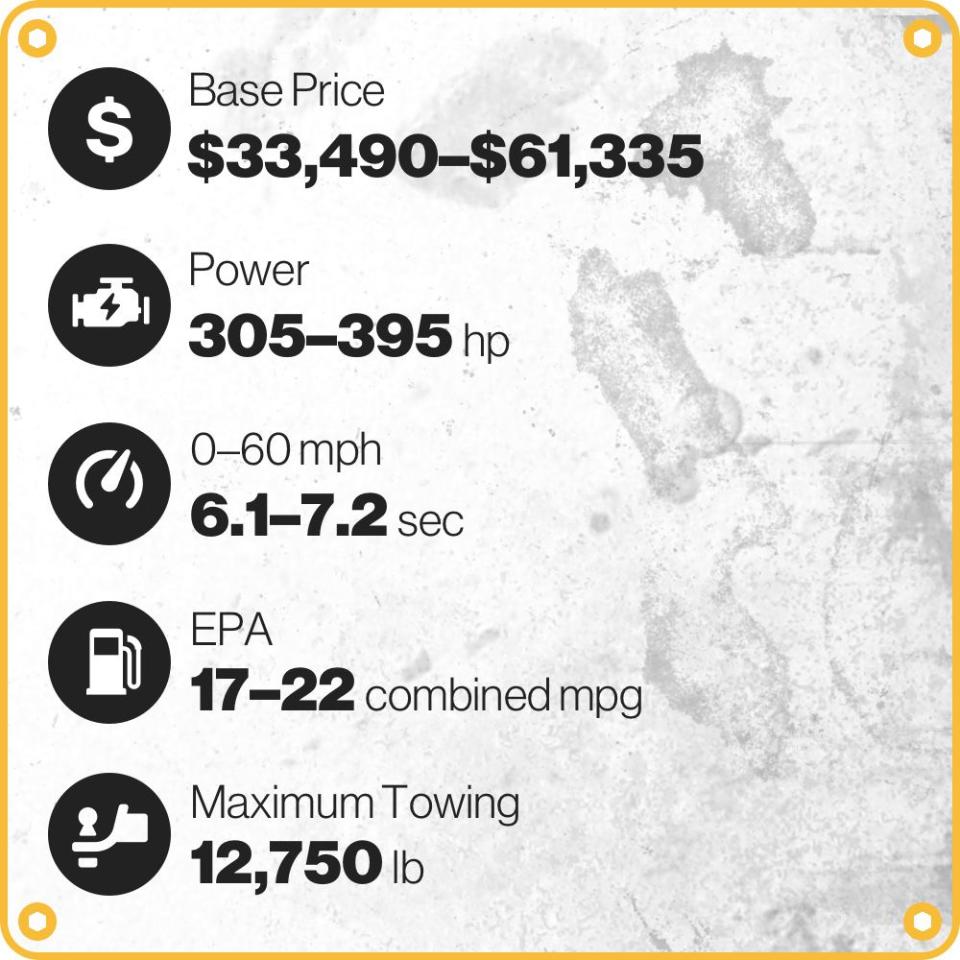
Never mind their blue-collar, tough-guy image. Pickups are among the most progressive vehicles you can buy today. In terms of polish, power-remember late-’70s V-8s? nonturbo-diesel heavy-duties?-payload, and towing capacity, these are tech leaders writ large. And remember bare-metal interiors? Even more than the rapidly escalating towing wars, ultraluxe cabin fittings are the fastest-developing front in the full-size pickup olympics. It makes sense: $70,000 versions of $30,000 trucks make a pretty penny for the automakers.
But nobody spends more pennies on its interiors than Ram. In the new-for-2019 1500’s upper trims, Laramie Longhorn and Limited, the detailing and material richness exceed not only those of any other current pickup, but the standards established by any domestic vehicle in many decades. No American vehicle today-not a Cadillac, not a Lincoln, not a Tesla-can hold a candle to the top-level Rams’ cabins.
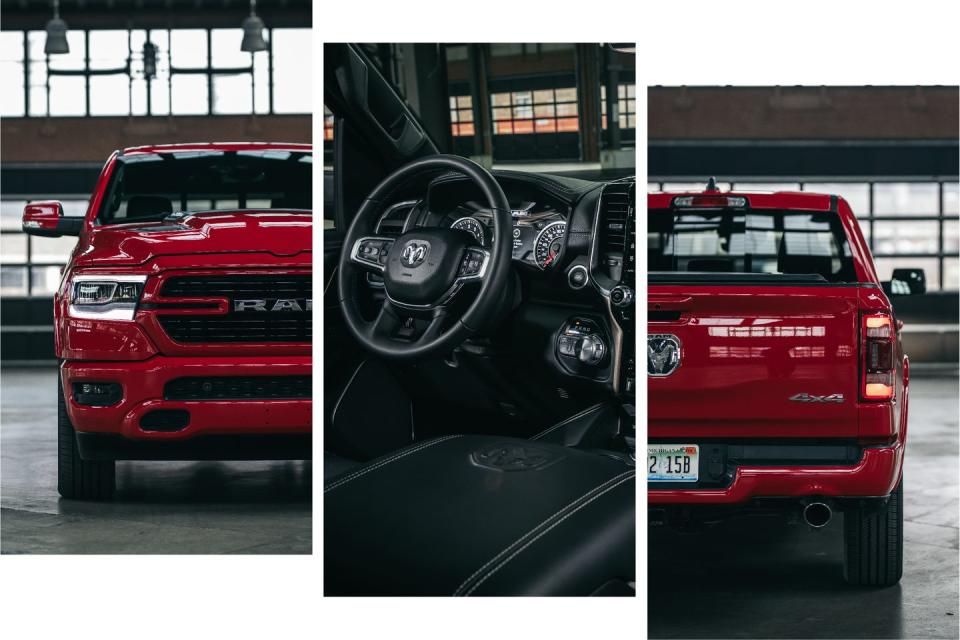
But even a bunch of prisses from Ann Arbor aren’t so soft as to only roll around on a truck’s carpets and fondle its dash pad before declaring a winner, though. With either the standard coil springs or the optional air springs, the Ram’s rear suspension delivers a class-leading ride with or without a trailer, smoothing out high-frequency chatter and shrugging off big impacts.
The eTorque 48-volt hybrid system is standard with the V-6, optional with the Hemi, and helps even the latter engine snug up to Ford Raptor’s turbo 3.5-liter V-6 in fuel economy. Although the Ford engine and GM’s 6.2-liter V-8 make more power and torque than the Ram’s V-8, the Hemi makes the most satisfying rumble.
In its comfort, composure, and capability, the Ram 1500 is America at its best.

Best Van: Chrysler Pacifica
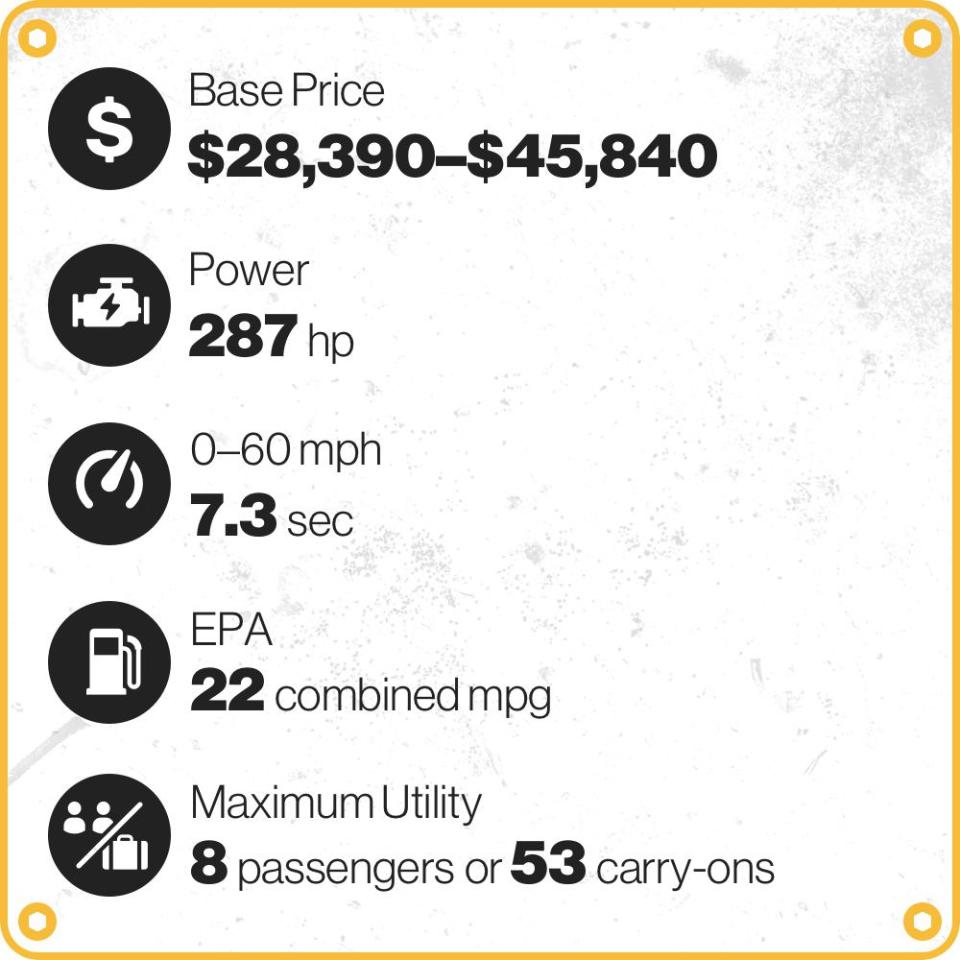
Having previously vanquished its mainstream competitors, the Chrysler Pacifica cruises comfortably to a third consecutive victory as our pick for Best Van. The Pacifica does so because it provides the most comfortable way to haul the tribe across town or across the country. It entertains rear occupants with the available Uconnect Theater's 10.1-inch touchscreens, while at the same time catering to front passengers with Barcalounger-like seats that provide 12-hour comfort. For the driver, the Pacifica arranges its controls in a manner that is easy to understand and operate.
When equipped with Chrysler's Stow 'n Go seating (base and hybrid models forgo this feature), it quickly converts from soccer-team shuttle to bathroom-remodeling-supply hauler by allowing the second- and third-row seats to be folded into cubbies beneath the floor. No other van converts so easily, and note that its ability to haul 53 carry-on-size suitcases in its cargo hold is more than 50-percent better than the next-best vehicle on this list.
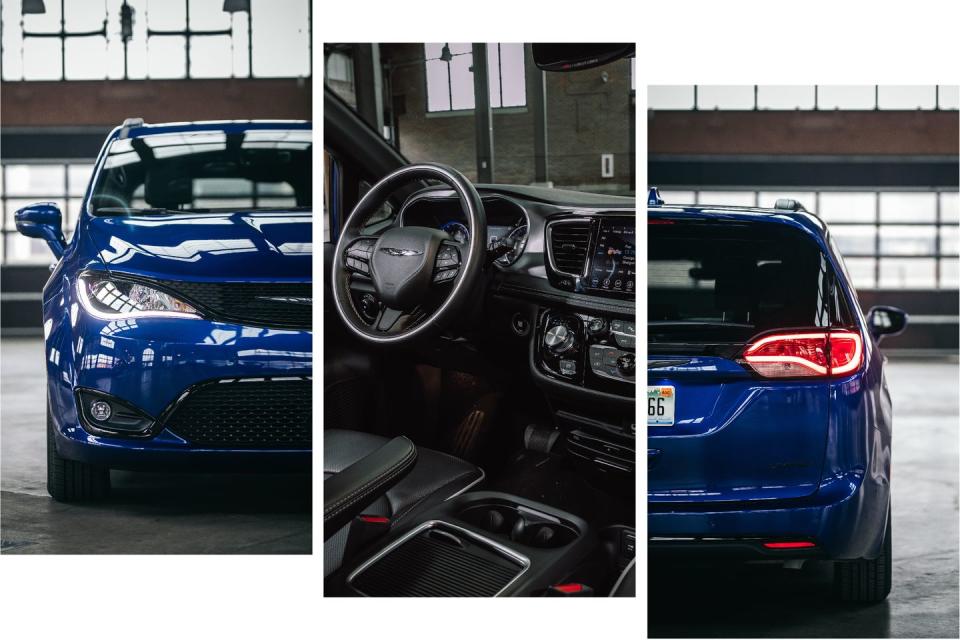
Importantly, the Pacifica is not a penalty box to drive. The potent 287-hp 3.6-liter V-6 mated to a smooth-shifting nine-speed automatic motivates the van with authority. And the Pacifica corners with surprising confidence-for a van, that is-thanks to its refined chassis.
The available S Appearance package even adds some snazzy accents to the Pacifica's already upscale look, one that won't be mistaken for an HVAC technician's work van. With SUVs the de facto choice for family vehicles, could it be that the purchase of a minivan has become radical and chic? That's debatable, but what's beyond debate is that the Chrysler Pacifica is the best minivan in the land.

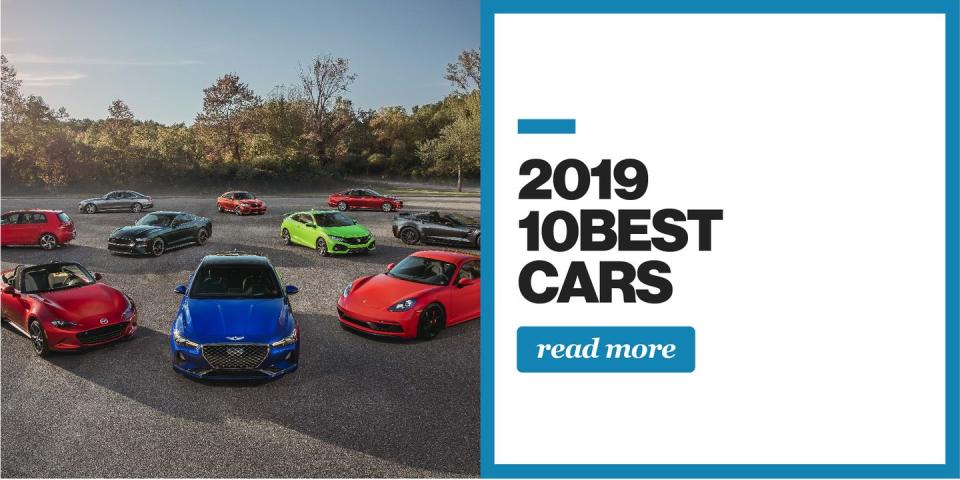
('You Might Also Like',)

 Yahoo Autos
Yahoo Autos 